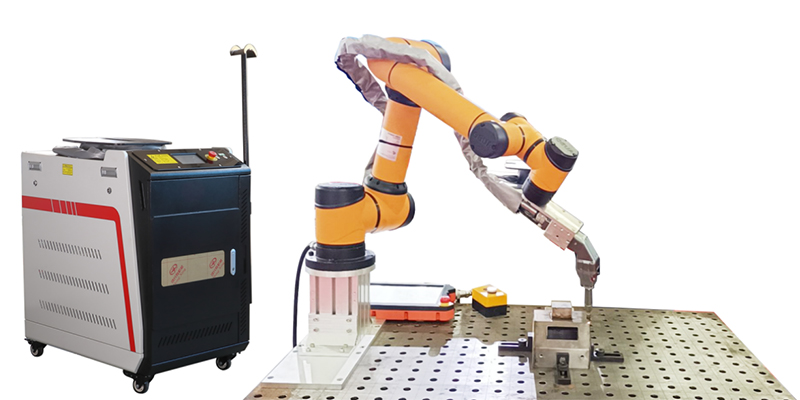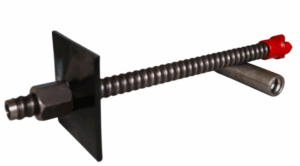Laser welding machines are more and more widely used in the market. Compared with human beings, laser welding robots are much higher in work quality and efficiency than human beings. Many types of equipment can achieve good welding effects, but some equipment will be limited by application time in actual applications.
That is, after continuous operation for a period of time, it needs to stop and rest. Unlike robot laser welding machines, it can basically achieve the effect of long-time continuous operation in practical use. The important thing is that it is not limited by any factors in the operation process, and the specific welding effect is relatively stable. This is very difficult for other equipment, and robot laser welding can be done easily.
With the continuous development of smart manufacturing, robotic laser welding machines have become important automated production equipment in industrial production. The laser welding process has developed rapidly in recent years. Robotic laser welding machines are widely used in various fields with their advantages.
Table of Contents
ToggleWhat are the application fields of robot laser welding machines?
Machinery Manufacturing Field
With the intensification of welding tasks in the machinery manufacturing industry, welding is a dangerous profession with poor labor conditions and large thermal radiation. There are also many large equipment in machinery manufacturing, which also increases the difficulty of welding.
The robot laser welding machine is an automated mechanical equipment for welding, which reduces the labor intensity of workers and helps improve the automation level in the field of machinery manufacturing.
Automobile and auto parts
In recent years, the automobile industry has shown diversified development in order to meet the needs of the public. Traditional welding can not meet the high welding requirements of automobile and auto parts manufacturing. Laser welding robots can realize accurate welding for the weld, and put down just good welding materials for filling. The weld joints are beautiful and firm. In many modern automobile production workshops, laser welding robot assembly lines have been formed.
- Coalfield: The application of robot laser welding machines is mainly reflected in the welding of hydraulic support for coal mining. Coal industry mining volumes are rising. Laser welding robots can replace workers to work in harsh environments, reduce the harm of occupational diseases, prevent more than correct, and save costs for the coal mining field.
- Electronic Equipment: The field of electronic equipment has high requirements for welding quality. With the improvement of social demand for electronic equipment, electronic equipment is also facing severe challenges while developing rapidly. Laser welding robots can ensure production efficiency stabilize the welding quality at the same time, and realize the accurate welding of electronic equipment, which is three to four times higher than the manual efficiency.
- Aerospace: In the aircraft structure, there are nearly a thousand welded components of the aircraft body and nearly ten thousand parts involved. Most of the important load-bearing components of the aircraft use welded components. The aircraft body is under great pressure during flight, so the welding requirements are relatively strict. The laser welding robot uses automatic welding seam tracking technology to flexibly set welding parameters and weld aircraft structures.

Advantages of robot laser welding:
- Robot laser welding is suitable for large-format space welding. The robot operates intelligently, is flexible and reliable, can be linked by six axes, can weld in any space, and is not limited to plane welding
- Robot laser welding fixtures can be customized according to production requirements
- Robot laser welding can realize multi-position or double-position welding operations, greatly improve production efficiency, and save product installation fixture time and
- Robot laser welding is combined with high-efficiency welding joints. Its unique wedge vibration mode widens the weld, making laser welding more widely used. For larger workpieces and workpieces with wider weld, laser high-efficiency and precision welding can be realized. Moreover, the welding quality effect is much better than that of ordinary welded joints. The weld surface is flat and beautiful, and the welding quality is good
- Robot laser welding has high repetition precision, can repeat welding without error many times, has no consumables, flexible processing, and low operation cost
Characteristics of robot laser welding:
- The fiber laser has a very small spot, small heat-affected zone, small deformation, and ultra-fast welding speed
- Fiber laser multi-mode welding, which can freely convert modulation and continuous modes according to product requirements
- CD liquid crystal monitoring and observation system can clearly observe product positioning and welding effect according to red light indication
- 40% of the energy provided by the power supply is converted into laser energy, which makes the equipment more energy-saving
- The service life of the fiber laser is 100000 hours. There are no consumables at all, and the daily maintenance is more convenient
- For inaccessible precision parts, flexible transmission non-contact welding can be implemented, which is more flexible and of higher quality. It can adapt to butt welding, lap welding, overlap welding, nail welding, crimping welding, T-type welding, edge welding, etc. of various complex products.
According to incomplete statistics, about half of the industrial robots in service all over the world are used in various forms of welding processing.
With the development of advanced manufacturing technology, it has become an inevitable trend to realize the intelligence, automation, and flexibility of welding product manufacturing. The use of robot welding with seam tracking has become the main symbol of intelligent welding technology.
0



